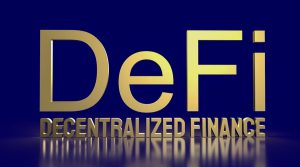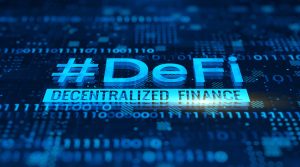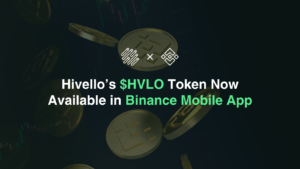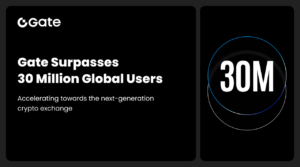Liquidity Pools: Boosting DeFi Growth and Adoption

Liquidity Pools: Boosting DeFi Growth and Adoption
Decentralized finance (DeFi) has taken the financial world by storm in recent years, and one of its key features is liquidity pools. Liquidity pools are integral to DeFi’s growth and adoption, and this article will explore their role, benefits, and challenges. By the end, you’ll have a comprehensive understanding of why liquidity pools are crucial for DeFi applications.
Overview of DeFi and Liquidity Pools
DeFi is a decentralized financial system built on blockchain technology, aiming to provide financial services such as lending, borrowing, and trading without intermediaries. Instead, it relies on smart contracts and decentralized applications (DApps) running on blockchain networks.
Liquidity pools are a mechanism for enabling trading in decentralized exchanges (DEXs) and other DeFi applications. They allow users to pool their assets, providing liquidity for traders to swap cryptocurrencies. The pricing and execution of trades are automated via smart contracts, ensuring fairness and transparency.
Benefits of Liquidity Pools
Increased Liquidity and Efficiency
Liquidity pools enhance liquidity by pooling funds from multiple users, enabling a higher volume of trades to be executed. In turn, this increases efficiency by reducing the time and cost of executing trades compared to traditional centralized exchanges.
Decentralized Control and Transparency
Liquidity pools are decentralized, meaning they’re not owned by any single entity, but rather by the users who pool their assets. This promotes transparency, trust, and fairness in the DeFi ecosystem.
Lower Fees and No Intermediaries
Liquidity pools eliminate intermediaries, such as market makers and brokers, reducing trading fees and enabling users to trade directly with each other. Moreover, since smart contracts power liquidity pools, there’s no need to pay intermediaries for execution, settlement, or custody.
Challenges of Liquidity Pools
Impermanent Loss
Impermanent loss occurs when the value of pooled assets changes relative to the value of the asset being traded. For instance, if a user pools ETH and USDT and the price of ETH rises, the value of the USDT in the pool will decrease, resulting in impermanent loss. This risk can be mitigated by carefully selecting the assets to be pooled and using a diversified portfolio.
Slippage and Front-Running
Slippage and front-running are issues that arise when a large trade is executed on a liquidity pool, causing the price of the asset to move. Traders can take advantage of this by front-running the trade, buying or selling the asset before the trade is executed. These issues can be mitigated by implementing safeguards such as time locks, price limits, and transaction fees.
How Liquidity Pools Work
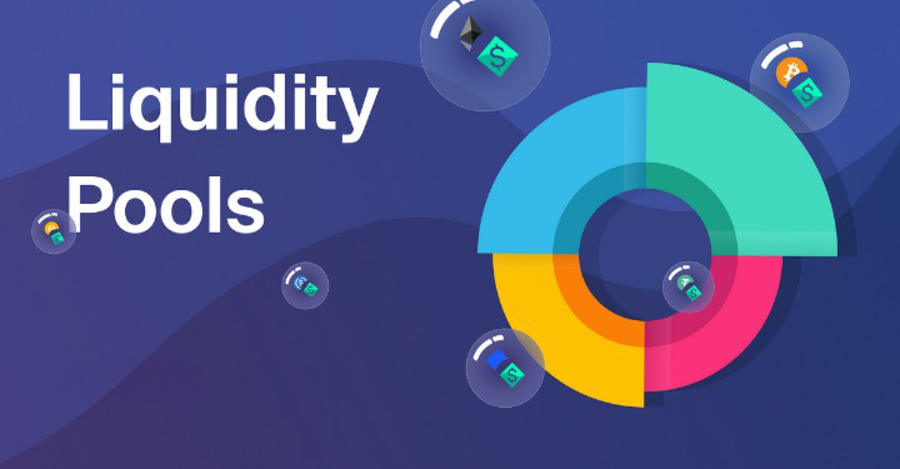
Liquidity pools are created by users who deposit two or more tokens into a smart contract. These tokens are then locked into the pool and used to facilitate trades on the DEX. Traders can buy or sell assets from the pool by swapping one token for another. The price of the token is determined by an automated market maker (AMM) algorithm, which adjusts the price based on the supply and demand of the assets in the pool.
Liquidity providers earn a portion of the trading fees generated by the pool, proportional to the amount of liquidity they provide. For instance, if a liquidity provider contributes 10% of the pool’s total liquidity, they’ll earn 10% of the trading fees. This incentivizes users to provide liquidity and enables DEXs to operate without a central order book.
Liquidity Pools vs. Centralized Exchanges
Liquidity pools and centralized exchanges differ in several ways, including:
- Ownership: Centralized exchanges are owned and operated by a single entity, while liquidity pools are decentralized and owned by the users who contribute liquidity.
- Control: Centralized exchanges have full control over the order book, matching engine, and trading rules, while liquidity pools rely on smart contracts to determine the price and execution of trades.
- Transparency: Liquidity pools are more transparent than centralized exchanges since all transactions are recorded on the blockchain, and the smart contract code is auditable. Centralized exchanges, on the other hand, may lack transparency due to opaque trading practices and off-chain transactions.
- Counterparty Risk: Centralized exchanges pose a counterparty risk since users must entrust their assets to the exchange, which may be vulnerable to hacks, fraud, or bankruptcy. Liquidity pools eliminate counterparty risk since users retain control over their assets and are not reliant on a central entity.
Use Cases for Liquidity Pools
Liquidity pools have several use cases beyond trading, including:
Yield Farming
Yield farming involves providing liquidity to a DeFi protocol and earning rewards in the form of tokens. Liquidity pools provide the infrastructure for yield farming, enabling users to contribute liquidity and earn rewards for doing so.
Token Swaps
Liquidity pools enable token swaps, allowing users to exchange one token for another without intermediaries. Token swaps are a popular use case for liquidity pools and have grown in popularity in recent years.
Derivatives
Liquidity pools can also be used to create derivatives such as options, futures, and swaps. Derivatives enable traders to manage risk and gain exposure to assets without owning them directly.
Future Developments in Liquidity Pools
The future of liquidity pools is bright, with several developments on the horizon, including:
- Layer 2 Scaling: Layer 2 scaling solutions such as Optimistic Rollups and ZK Rollups offer significant improvements in scalability and throughput, making liquidity pools more efficient and accessible.
- Cross-Chain Interoperability: Cross-chain interoperability will enable the liquidity pool to be connected across different blockchain networks, expanding the availability of trading pairs and increasing liquidity.
- Dynamic Pricing Algorithms: Dynamic pricing algorithms such as Constant Product Market Makers (CPMM) and Constant Mean Market Makers (CMMM) are emerging as a way to reduce impermanent loss and increase the efficiency of liquidity pools.
Liquidity Pool Examples
Several DeFi protocols offer liquidity pools, including:
Uniswap
Uniswap is one of the most popular DEXs and liquidity pool providers, enabling users to trade tokens without intermediaries. It uses a CPMM algorithm to determine the price of tokens and rewards liquidity providers with a portion of the trading fees.
Curve
Curve is a DEX focused on stablecoins and other low-volatility tokens. It uses a CMMM algorithm, which adjusts the price based on the average price of the assets in the pool. The Curve also offers incentives for liquidity providers in the form of CRV tokens, which can be used to vote on protocol upgrades.
Balancer
Balancer is a DEX that enables users to create a custom liquidity pool with up to eight tokens. It uses a CPMM algorithm and offers incentives for liquidity providers in the form of BAL tokens, which can be used to vote on protocol upgrades and earn a portion of the trading fees.
Best Practices for Liquidity Pool Providers
Liquidity pool providers should follow best practices to minimize risk and maximize returns, including:
Diversify Assets
Liquidity providers should diversify their assets to minimize the risk of impermanent loss. By selecting assets with low correlation, liquidity providers can mitigate the risk of losses due to price fluctuations.
Monitor Pools Regularly
Liquidity providers should monitor their pools regularly to ensure that the assets in the pool remain balanced and the price of the token is accurate. If the price deviates significantly from the market price, liquidity providers may need to rebalance their assets.
Consider Impermanent Loss Protection
Some DeFi protocols offer impermanent loss protection, which mitigates the risk of losses due to impermanent loss. Liquidity providers should consider using such protection to minimize their risk exposure.
Conclusion
The liquidity pool is an integral component of the DeFi ecosystem, providing increased liquidity, transparency, and efficiency. While they come with challenges such as higher risk and impermanent loss, their benefits for traders and liquidity providers are significant. As DeFi continues to evolve, the liquidity pool is expected to play a critical role in enabling new and innovative financial services.
FAQs
1. What is the difference between centralized and decentralized exchanges?
Centralized exchanges are run by a single entity, usually a company, and require users to entrust their assets to the exchange. Decentralized exchanges, on the other hand, are run on a blockchain network and allow users to trade assets without intermediaries or custody risks.
2. Can anyone create a liquidity pool?
Yes, anyone can create a liquidity pool by providing assets to a DEX or other DeFi application that supports a liquidity pool. Users can earn rewards in the form of transaction fees and other incentives for contributing to the liquidity pool.
3. How can I manage impermanent loss?
Impermanent loss can be managed by selecting assets with low volatility and using a diversified portfolio. Moreover, some DeFi protocols offer strategies such as impermanent loss protection, which mitigates the risk of losses.
4. What are flash loans?
Flash loans are a type of uncollateralized loan that allows users to borrow funds from a liquidity pool for a short period, usually less than a second. Flash loans are popular in DeFi for enabling arbitrage opportunities, trading strategies, and other use cases.
5. How do liquidity pools contribute to DeFi’s growth and adoption?
Liquidity pools provide essential infrastructure for trading in DeFi, enabling users to swap assets in a decentralized and efficient manner. They also provide incentives for users to contribute to the DeFi ecosystem by offering rewards for providing liquidity. As more liquidity is added to DeFi, the ecosystem’s capacity to provide financial services grows, leading to broader adoption and increased innovation.

